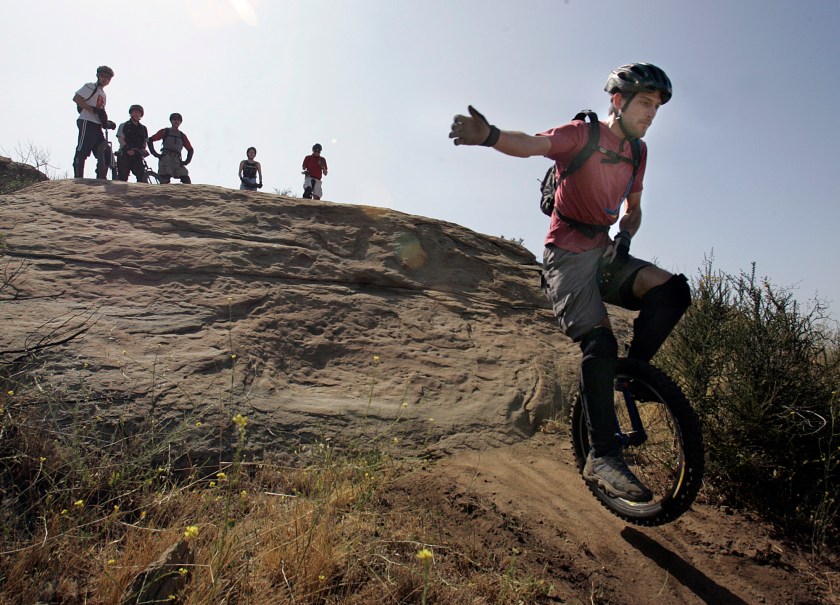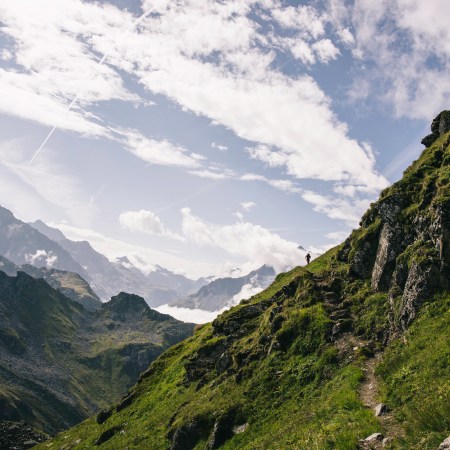
Adrenaline junkies have a reputation for pushing the limits, defying gravity and the laws of physics to overcome seemingly insurmountable challenges. Sometimes the usual gambit of extreme sports—from snowboarding to cliff diving—isn’t enough for a thrill-seeker. That’s where a bizarre offshoot of adventure sports comes in. Based on some pre-existing sport, athletes give it a unique twist (like Miles Daisher did above).
Below, RealClearLife has curated a list of six little-known adventure sports that will likely make your jaw drop.
Ocean Zorbing
If you’re unfamiliar with zorbing, it’s basically a competition involving a human-sized hamster ball. You propel yourself forward by pushing and pushing, so it’s easy to imagine how exhausting it could become on water with little friction to generate traction. Aqua zorbing is popular internationally, but many insurance companies refuse to insure vendors of the sport in the United States because of safety reasons. Taking it to the Nth degree, ocean zorbing is just what is sounds like: zorbing on the high seas.
Going out onto the ocean in a watercraft without any power other than your body is inherently dangerous, but the physical limitations are the most threatening. Temperatures inside the translucent zorb can reach up to 120 degrees when at sea. Ocean zorber Reza Baluchi was rescued by the U.S. Coast Guard earlier this year for the second time as he tried to finish a 1,000-mile journey from Florida around the Caribbean. After his second failed attempt, the Coast Guard issued a statement saying the sport is “manifestly unsafe.”

Mountain Unicycling
Sometimes called Muni, mountain unicycling shatters all notions of unicycling being a sport only for hippies and circus clowns. This extreme sport is even considered more difficult than regular mountain biking. While unicycles are generally slower on flat terrain than regular bikes, mountainous terrain evens the playing field out.
Muni requires a special type of unicycle, one that can handle the rugged terrain. Outfitted with a mountain-bike-like tire, the unicycle also has reinforced hubs and high-grip pedals. Athletes on a unicycle ran reach speeds of up to 50 mph when descending rocky trails. Even though some mountain unicycles come equipped with brakes, a high degree of training in unicycling on flat terrain is encouraged before attempting the sport.

Skyaking
Ever thought skydiving could get more death-defying? Well, try doing it in a kayak. That’s right, a kayak. Skydivers looking to have an aquatic landing can jump out a plane strapped into a kayak. While that sounds exciting, the watercraft adds an extra dimension of difficulty to the equation.
The base of the kayak has more surface area than the human body, creating greater wind resistance, and therefore, it falls slower. The average skydiver will fall as fast as 180 mph, while a skyaker will descend at around 98 mph. Slower speeds do not mean it’s safer, however, since increased wind resistance ups the chance of the kayak going into a flat spin (i.e. an out-of-control spin that could potentially lead to a blackout).

Ice Canyoning
Canyoning involves—you guessed it—the exploration of canyons and the rivers that run through them, and requires both mountain climbing and rappelling skills. But for those of you looking for a challenge (and decent shot at hypothermia), try ice canyoning, which is the same sport, only chillier and more dangerous.
A favorite spot for ice canyoners? Semi-frozen waterfalls, because they provide an equal level of challenge and natural beauty. That said, the relatively new sport can be done just about anywhere where it’s cold enough to freeze water. The same principles behind canyoning are at play, but with specialized equipment to handle the ice sheets. Speaking of which, the sport’s greatest danger is falling ice. Avalanches and being drowned in freezing water are also assumed risks when ice canyoning.

Glacier Boarding
Continuing with the icy theme, glacier boarding is another sport that puts a frozen spin on one that’s usually reserved for the summertime. It’s basically body boarding in rivers of melted glacier.
Though it’s one of the least developed sports on this list, glacier boarding is perhaps the most creative. Boarders hike across a glacier, which is pretty perilous to begin with, and then plop down into streams of glacial runoff. Sudden ice-melt—basically a flash flood—transforms the stream into a torrential river in an instant. Boarders also need to be aware of crevasses, which can appear around a bend seemingly out of nowhere, as they descend the ice flow. Much like ice canyoning, glacier boarding also has a high risk of hypothermia involved.

Free–Cliff Diving
As RealClearLife has showcased numerous times, cliff diving is pretty nuts to begin with, as is its cousin free diving. So, we’re not surprised that somebody, who’s clearly a bit farther off their rocker, decided to combine the two.
Cliff diving is self-explanatory, but free diving is the act of diving for extended periods of time without any weight or breathing equipment. So, free–cliff diving is basically an extension of cliff diving into the water. Requiring no gear and a large lung capacity, divers plunge off cliff faces into the waters below—and then continue diving/swimming down to various depths to complete a challenge. The stipulations all depend on the competition, but they’re usually friendly contests held between cliff divers in their spare time. Some of the risks involved in the sport include blacking out and ruptured ear drums.

Whether you’re looking to get into shape, or just get out of a funk, The Charge has got you covered. Sign up for our new wellness newsletter today.


















